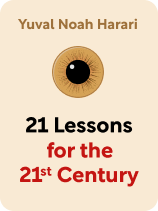

This article is an excerpt from the Shortform book guide to "21 Lessons for the 21st Century" by Yuval Noah Harari. Shortform has the world's best summaries and analyses of books you should be reading.
Like this article? Sign up for a free trial here .
What makes it so hard to resolve matters concerning immigration? What immigration debates are currently on the global agenda?
Immigration is difficult to resolve because it is nuanced—both sides have legitimate arguments. Difficult as it may be, each nation’s ability to reach an agreement on the pertinent immigration debates will be a major indicator of its potential to come together to address the looming challenges of the 21st century.
Read about the key immigration debates of the 21st century.
What Are the Key Immigration Debates?
Nationalist divisions strain debates around immigration, which further exacerbates division. But nations’ abilities to resolve disagreements about immigration will indicate how effectively they’ll be able to address global issues of the 21st century.
Immigration will increasingly be a flashpoint because of growing tensions among people of different nationalities as the global economy, increased international travel, and technology bring people together from across the world. If governments don’t find ways of addressing the fierce debates around immigration, people will be too divided to tackle the global challenges of the 21st century.
Immigration Strikes a Deal Between Migrants and Countries
Immigration requires an understood deal between migrants and host countries—but immigration opponents say that immigrants aren’t holding up their end of the deal, while immigration advocates say that host countries are falling short. We’ll explore the immigration debates around the three terms of the deal:
- The host country lets immigrants enter.
- The immigrants adopt the host country’s basic values and norms, even when it conflicts with their traditional values.
- As the immigrants assimilate, they gain equality and membership in the host country.
Term #1: Immigrants Enter the Host Country
This basic first step of the physical entry of migrants into the host country sparks heated debates around immigration:
Pro-immigrationists argue that:
- In our globalized world, each country has a moral duty to open its borders to refugees and migrants who seek better opportunities than those that exist in their home countries.
- An attempt to ban immigration would merely push it to an underground market of human traffickers and undocumented workers and children. It’s better to legalize immigration so that the government can regulate it.
Anti-immigrationists argue that:
- Countries have no obligation to welcome foreigners, with the possible exception being refugees fleeing a neighboring country. Otherwise, any immigration that is allowed should be considered a favor, not a duty.
- Along with the right to choose whether to allow migrants to enter, countries should be able to accept or deny immigrants based on any criteria they want—including professional skills, criminal records, and religion.
- Immigrants who are allowed to enter a host country should feel grateful for the favor, regardless of their quality of life, rather than listing demands and grievances.
Of course, sometimes countries will say one thing and do another. For example, a country may turn a blind eye to undocumented workers because the economy benefits from their cheap labor, while also refusing to give them legal status. This dynamic ultimately creates an entire class of underpaid, undocumented immigrants who have no political power.
Term #2: Immigrants Must Assimilate
Once immigrants have entered a host country, the nation and its citizens expect the immigrants to assimilate to local norms and values—however, people have a range of opinions about the extent to which immigrants should assimilate. Must they change the way they dress, the way they eat, the way they socialize? If their home country is religious, must they take on a secular view? If their home country is patriarchal, must they take on a feminist view?
There are two main issues in the debate about assimilation:
- Tolerance: If tolerance is one of the host country’s central values, you could argue that immigrants must assimilate by being tolerant of all ethnicities, all religions, gender equality, and LGBTQ rights. On the other hand, you could argue that the host country is obligated to be tolerant of the immigrants—even if they are intolerant of certain groups—as long as they don’t harm anyone’s rights and freedoms.
- Identity: If you tell immigrants to assimilate, you must define the national identity to which they’re supposed to assimilate. This is especially difficult in diverse nations, where many citizens deviate from a general national archetype. For example, Italian assimilationists may push Muslim immigrants to convert to Catholicism, despite the fact that most Italian citizens don’t go to church.
Term #3: Immigrants Gain Equality
If immigrants assimilate to their host country, the expectation is that they will be accepted as full, equal members of that country’s society. The disagreement between pro-immigration and anti-immigration arguments lies in the timeline for this acceptance. Immigration advocates view this process on a personal timescale from the immigrants’ perspective: A second-generation immigrant identifies as a citizen of the host country, and she may know little of her grandparents’ home country. Why, then, shouldn’t the host country accept her? Immigration proponents argue that assimilated immigrants should be absorbed into society and treated like first-class citizens within a few decades of their arrival—and if they aren’t treated fairly and they protest for better treatment, it’s the host country’s fault for failing to embrace them.
On the other hand, immigration opponents view this process on a collective timeline from the nation’s perspective, and they argue that host countries need more time to absorb new members into society. Anti-immigrationists say that it takes generations for foreigners to become part of the fabric of the country and to be fully integrated as equal citizens. Historically, civilizations that successfully absorbed foreigners took centuries to do so.
Is Each Side Holding Up Its End of the Deal?
Although generally everyone agrees upon the three terms of the deal of immigration, the conflicts arise in defining those terms:
- Do countries have an obligation to accept immigrants, or is it merely a favor?
- To what extent should immigrants be expected to assimilate?
- How long should it take a host country to accept immigrants as equal citizens?
Immigration opponents think that immigrants are failing to assimilate, which frees the host country from its obligation to treat them as equal citizens, and justifies the host country’s reluctance to accept more immigrants. By contrast, immigration advocates say that immigrants are making the effort to assimilate but that host countries are neglecting their obligation to absorb the immigrants. As long as the two sides are using different definitions, there’s no way to reach a common ground.
Immigration Ignites Culturism
Immigration puts the culture of a migrant’s home country side-by-side with the culture of the host country, highlighting the differences between the two. This comparison often leads to biased claims that one of the cultures is superior. Typically, the host country’s culture is considered superior, because, in a sense, the house always wins.
For example, imagine someone migrates from the fictional country of Coldia to the fictional country of Warmland. Culturally, Coldians tend to repress emotional outbursts, avoid conflict, and let issues simmer quietly, while Warmlanders value confrontation and expressions of emotion in order to resolve conflicts and move forward. When the Coldian immigrant applies for a job in Warmland, the hiring manager sees the Coldian as emotionally distant, unfriendly, and cold. The job involves a lot of interaction with employees and clients, and the hiring manager doesn’t think the Coldian would be effective, so she offers the job to a native Warmlander instead of the immigrant.
Similar situations play out in all kinds of contexts. On one hand, the hiring manager may objectively be looking for the best fit for the job. On the other hand, a cycle develops in which immigrants are kept in lower positions because they follow different cultural norms, and that limits their ability to prosper in their new country. These are the effects of culturism.
It’s difficult to draw the line between cultural differences and discrimination. In fact, culturism clearly crosses into bigotry in three ways:
- A particular culture may be superior in a specific context—such as in the Coldian example, a Warmlander would probably be a better fit for the job because it deals with other Warmlanders. However, the argument becomes discriminatory when people confuse local or context-specific cultural superiority with objective superiority, such as thinking a Warmlander is always the best job candidate for any position in any country.
- Some cultural claims are true within a specific scope—for example, Coldian culture is less tolerant of confrontation than Warmland culture. However, cultural claims become flawed when they’re overgeneralized and ambiguous, such as saying that Coldian culture is intolerant. Such a statement doesn’t specify what or whom Coldians don’t tolerate.
- Culturism may accurately assess a culture on a broad scale. However, issues arise when culturists overlook individual differences. Within any culture, there are people who don’t fit the general stereotype, and others who fall on a spectrum somewhere in between. This becomes dangerous when, for example, the Warmland hiring manager refuses to consider any Coldian on the assumption that they’re all distant and averse to conflict.

———End of Preview———
Like what you just read? Read the rest of the world's best book summary and analysis of Yuval Noah Harari's "21 Lessons for the 21st Century" at Shortform .
Here's what you'll find in our full 21 Lessons for the 21st Century summary :
- What the unique challenges of the 21st century are and will be
- Why religion can't solve these 21st-century challenges
- How algorithms like Netflix recommendations are teaching you not to trust yourself






